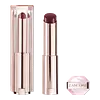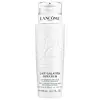What's inside
What's inside
 Key Ingredients
Key Ingredients

 Benefits
Benefits

 Concerns
Concerns

 Ingredients Side-by-side
Ingredients Side-by-side

Polyglyceryl-2 Triisostearate
EmulsifyingSqualane
EmollientBis-Behenyl/Isostearyl/Phytosteryl Dimer Dilinoleyl Dimer Dilinoleate
EmollientButyrospermum Parkii Butter
Skin ConditioningCellulose
AbsorbentDimer Dilinoleyl Dimer Dilinoleate
EmollientPolyglyceryl-3 Beeswax
EmulsifyingHelianthus Annuus Seed Cera
EmollientHydrogenated Castor Oil Dimer Dilinoleate
Skin ConditioningSimmondsia Chinensis Butter
Skin ConditioningHydrogenated Jojoba Oil
AbrasiveCandelilla Cera
EmollientRosa Centifolia Extract
Skin ConditioningCamelina Sativa Seed Oil
Skin ConditioningCanola Oil
EmollientMentha Piperita Oil
MaskingCeramide NP
Skin ConditioningSaccharomyces Ferment Filtrate
HumectantSilica
AbrasiveAluminum Hydroxide
EmollientPropylene Glycol
HumectantCitric Acid
BufferingTocopherol
AntioxidantPentaerythrityl Tetra-Di-T-Butyl Hydroxyhydrocinnamate
AntioxidantCI 45380
Cosmetic ColorantCI 45410
Cosmetic ColorantCI 15850
Cosmetic ColorantCI 77891
Cosmetic ColorantCI 19140
Cosmetic ColorantLimonene
PerfumingBenzyl Benzoate
AntimicrobialParfum
MaskingPolyglyceryl-2 Triisostearate, Squalane, Bis-Behenyl/Isostearyl/Phytosteryl Dimer Dilinoleyl Dimer Dilinoleate, Butyrospermum Parkii Butter, Cellulose, Dimer Dilinoleyl Dimer Dilinoleate, Polyglyceryl-3 Beeswax, Helianthus Annuus Seed Cera, Hydrogenated Castor Oil Dimer Dilinoleate, Simmondsia Chinensis Butter, Hydrogenated Jojoba Oil, Candelilla Cera, Rosa Centifolia Extract, Camelina Sativa Seed Oil, Canola Oil, Mentha Piperita Oil, Ceramide NP, Saccharomyces Ferment Filtrate, Silica, Aluminum Hydroxide, Propylene Glycol, Citric Acid, Tocopherol, Pentaerythrityl Tetra-Di-T-Butyl Hydroxyhydrocinnamate, CI 45380, CI 45410, CI 15850, CI 77891, CI 19140, Limonene, Benzyl Benzoate, Parfum
Water
Skin ConditioningParaffinum Liquidum
EmollientIsopropyl Myristate
EmollientPropanediol
SolventCI 77007
Cosmetic ColorantAnanas Sativus Fruit Extract
Skin ConditioningSodium Hydroxide
BufferingHydroxycitronellal
PerfumingPEG-32
HumectantPEG-60 Hydrogenated Castor Oil
EmulsifyingEugenol
PerfumingSalicylic Acid
MaskingSilica
AbrasiveLinalool
PerfumingBenzyl Alcohol
PerfumingCinnamyl Alcohol
PerfumingPapain
Skin ConditioningCarbomer
Emulsion StabilisingGeraniol
PerfumingDisodium EDTA
Disodium Cocoamphodiacetate
CleansingCitronellol
PerfumingHexyl Cinnamal
PerfumingParfum
MaskingWater, Paraffinum Liquidum, Isopropyl Myristate, Propanediol, CI 77007, Ananas Sativus Fruit Extract, Sodium Hydroxide, Hydroxycitronellal, PEG-32, PEG-60 Hydrogenated Castor Oil, Eugenol, Salicylic Acid, Silica, Linalool, Benzyl Alcohol, Cinnamyl Alcohol, Papain, Carbomer, Geraniol, Disodium EDTA, Disodium Cocoamphodiacetate, Citronellol, Hexyl Cinnamal, Parfum
 Reviews
Reviews

Ingredients Explained
These ingredients are found in both products.
Ingredients higher up in an ingredient list are typically present in a larger amount.
Parfum is a catch-all term for an ingredient or more that is used to give a scent to products.
Also called "fragrance", this ingredient can be a blend of hundreds of chemicals or plant oils. This means every product with "fragrance" or "parfum" in the ingredients list is a different mixture.
For instance, Habanolide is a proprietary trade name for a specific aroma chemical. When used as a fragrance ingredient in cosmetics, most aroma chemicals fall under the broad labeling category of “FRAGRANCE” or “PARFUM” according to EU and US regulations.
The term 'parfum' or 'fragrance' is not regulated in many countries. In many cases, it is up to the brand to define this term.
For instance, many brands choose to label themselves as "fragrance-free" because they are not using synthetic fragrances. However, their products may still contain ingredients such as essential oils that are considered a fragrance by INCI standards.
One example is Calendula flower extract. Calendula is an essential oil that still imparts a scent or 'fragrance'.
Depending on the blend, the ingredients in the mixture can cause allergies and sensitivities on the skin. Some ingredients that are known EU allergens include linalool and citronellol.
Parfum can also be used to mask or cover an unpleasant scent.
The bottom line is: not all fragrances/parfum/ingredients are created equally. If you are worried about fragrances, we recommend taking a closer look at an ingredient. And of course, we always recommend speaking with a professional.
Learn more about ParfumSilica, also known as silicon dioxide, is a naturally occurring mineral. It is used as a fine, spherical, and porous powder in cosmetics.
Though it has exfoliant properties, the function of silica varies depending on the product.
The unique structure of silica enhances the spreadability and adds smoothness, making it a great texture enhancer.
It is also used as an active carrier, emulsifier, and mattifier due to its ability to absorb excess oil.
In some products, tiny microneedles called spicules are made from silica or hydrolyzed sponge. When you rub them in, they lightly polish away dead skin layers and enhance the penetration of active ingredients.
Learn more about Silica